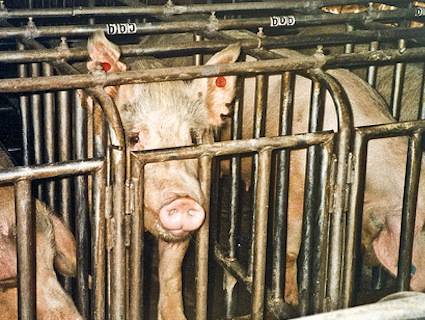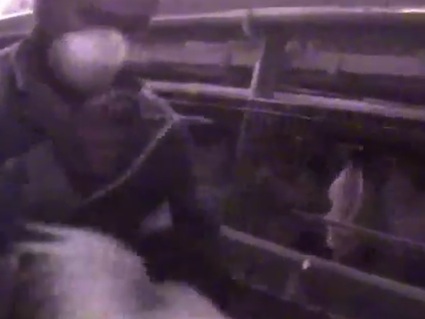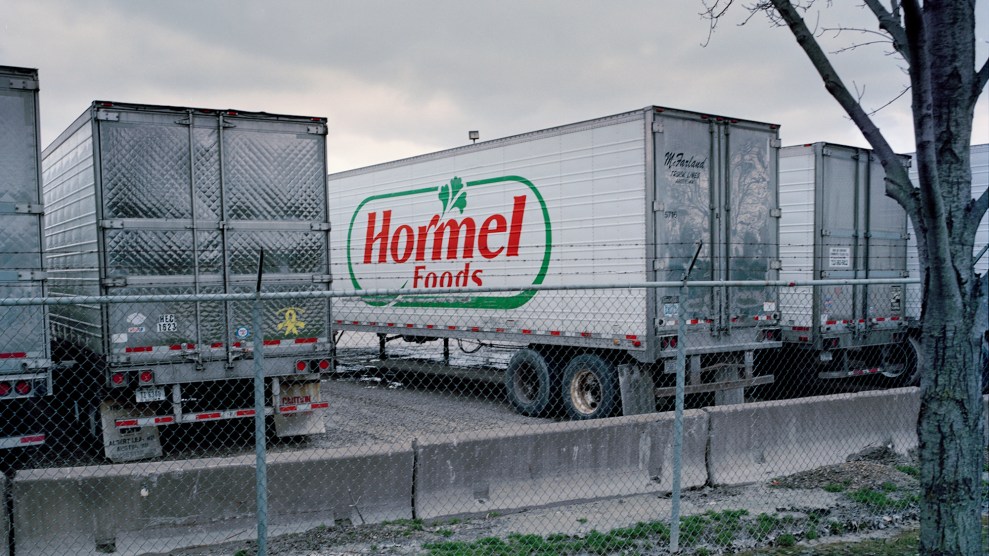The animal-welfare advocacy group Compassion Over Killing has released a brief segment of video documenting flagrant abuse of cows at a California slaughterhouse house called Central Valley Meat. The facility, located in the heart of the state’s vast milk-production industry, specializes in turning “spent”—i.e., no longer able to produce milk—cows into ground beef. The snippet is reportedly part of a much larger compilation of footage, taken by a Compassion for Killing investigator posing as a plant employee, that the group presented to the US Department of Agriculture, which oversees the safety of the meat supply.
Warning: It depicts some of the most extreme cases of animal cruelty I’ve seen on tape.
In response to the footage, the USDA immediately shut down the plant, pending an investigation. It’s an embarrassing situation for the agency, because it employs two full-time inspectors at the plant. Did they witness the abusive acts, many of which violate USDA code, and say nothing?
But the big looming question is whether the plant was caught slaughtering and processing cows that have lost the ability to stand or walk, known as “downers.” In a statement, the USDA flatly denied it: “In terms of food safety, the video footage provided to USDA does not show a ‘downer’ animal entering the food supply.” But as I’ll show below, questions linger.
Back in 2004, the USDA banned downer cows from the food supply. The trigger: In Washington state, a case of bovine spongiform encephalopathy (BSE)—”mad cow” disease—had been confirmed in a downer that had already been slaughtered and processed into ground beef. “The inability to stand or walk can be a clinical sign” of BSE, the agency explained.
The possibility of brain-wasting disease isn’t the only reason to be wary of downer burgers. A 2003 study by USDA scientists found that downer cows are three times more likely to carry the deadly-to-humans E. coli O157:H7 pathogen than non-downers.
In 2008, an undercover investigation by the Humane Society of the United States at a similar California facility, this one called Hallmark/Westland, showed workers using violence, including ramming with the blades of a forklift, to compel severely impaired cows through the kill line—again, despite the presence of USDA inspectors. The intention seemed to be to force the cows to walk, to avoid having to declare them “downers” and thus be forced to dispose of them and not sell them as meat.
The revelation prompted the largest meat recall in US history, affecting a stunning 143 million pounds of beef. But the recall came too late to prevent 37 million pounds of that meat from going into the USDA-run National School Lunch Program.
Central Valley Meat, the facility currently under investigation, also supplies the school lunch program, and provided as much as 30 percent of the beef used by In-N-Out Burger, until the abuse tape prompted the chain to cancel the contract, reports ABC News.
Was it slaughtering downers and turning them into burgers? The question is particularly loaded, given that in April, a euthanized downer cow that was randomly tested at a California rendering plant turned up with BSE. That plant is located in Hanford, Calif.—the same place as Central Valley Meat.
Compassion Over Killing presented the USDA with “hours” of video, Associated Press reports. But the group has so far only publicly released a four-minute snippet. When cows cease to be able to walk at slaughterhouses, they’re supposed to be euthanized and in a painless way and diverted from the processing line to be disposed of. The video definitively shows workers brutalizing lame cows during the euthanization process—a violation of USDA code. But those particular cows seemed destined for disposal, not processing into food.
At another point, it also shows them brutalizing unhealthy-looking animals as they move to slaughter, but it’s not clear to me whether any of the animals in question are downers. Again, the USDA denies it, but to me, it’s not clear that the Central Valley Meat employees aren’t engaging in the same thing that the Hallmark/Westland employees were back in 2008: using torture to compel downer cows to move on their own, so as not to have to remove them from the food supply.
At the very least, the video exposes some hard truths about the treatment of the animals that feed us. It shows what cows look like after spending their lives pumping out milk on industrial dairies—and how they are thanked for their service by severe cruelty at the end of their lives. The fact that they then become food will have you questioning your burger habit—as will this scathing 2010 report from the USDA’s Office of the Inspector General (summarized by me here) on the “veterinary drugs, pesticides, and heavy metals” that tend to wind up in the meat of such animals. It also reminds us of why Big Ag is so intent on criminalizing the practice of taking undecover videos in slaughterhouses.
















